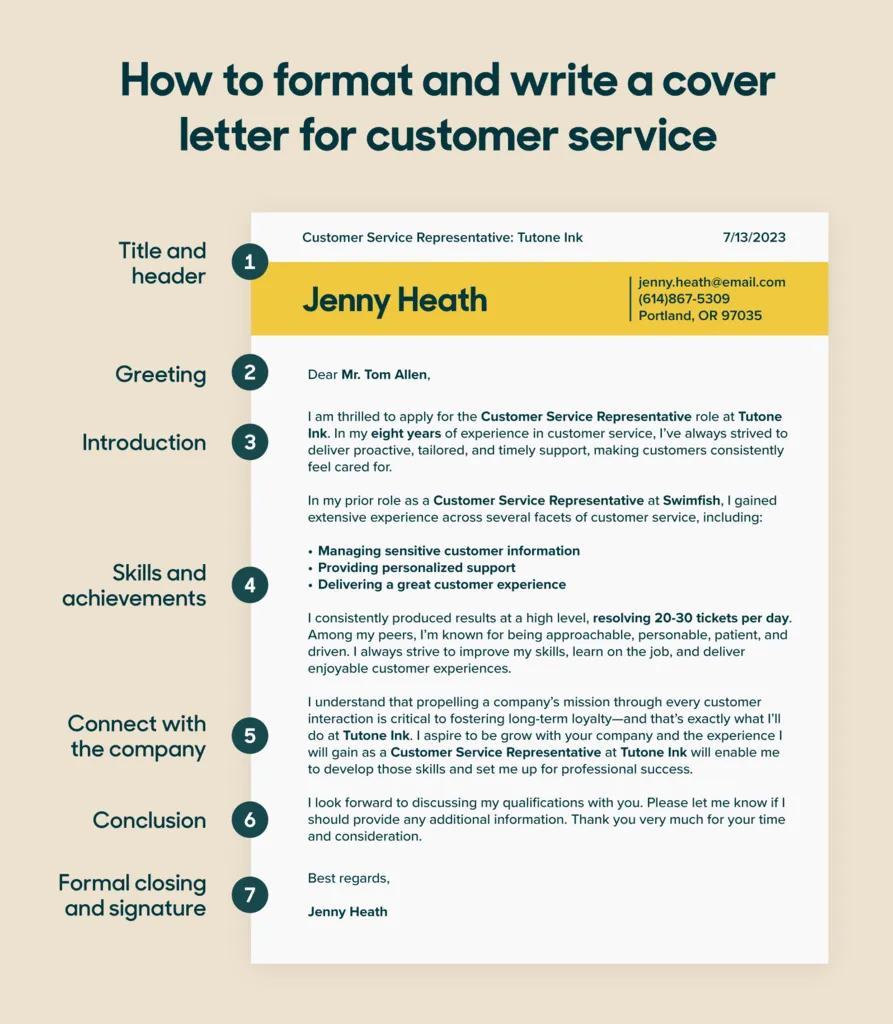Why You Need a Customer Service Cover Letter
In the competitive world of customer service, a well-crafted cover letter can be the key to unlocking your dream job. It’s more than just a formality; it’s your opportunity to make a strong first impression, showcase your personality, and demonstrate why you’re the perfect fit for the role. A cover letter allows you to go beyond the bullet points of your resume, providing context and highlighting your unique skills and experiences that align with the specific requirements of the position. It’s your chance to tell a compelling story about your customer service journey and convince the hiring manager that you’re the best candidate. Ignoring this crucial step can be a missed opportunity to stand out from the crowd and secure an interview.
Key Components of a Customer Service Cover Letter
A successful customer service cover letter is a well-structured document that includes essential elements. These components work together to create a compelling narrative that highlights your qualifications and demonstrates your genuine interest in the position. You must include your contact information, the date, and the hiring manager’s details. A professional greeting, an engaging opening paragraph, and a persuasive closing are also crucial. The main body of your letter should focus on highlighting your relevant skills and experiences, providing specific examples, and showcasing your achievements. By thoughtfully incorporating each of these components, you can create a cover letter that effectively captures the attention of potential employers and increases your chances of landing an interview.
Your Contact Information
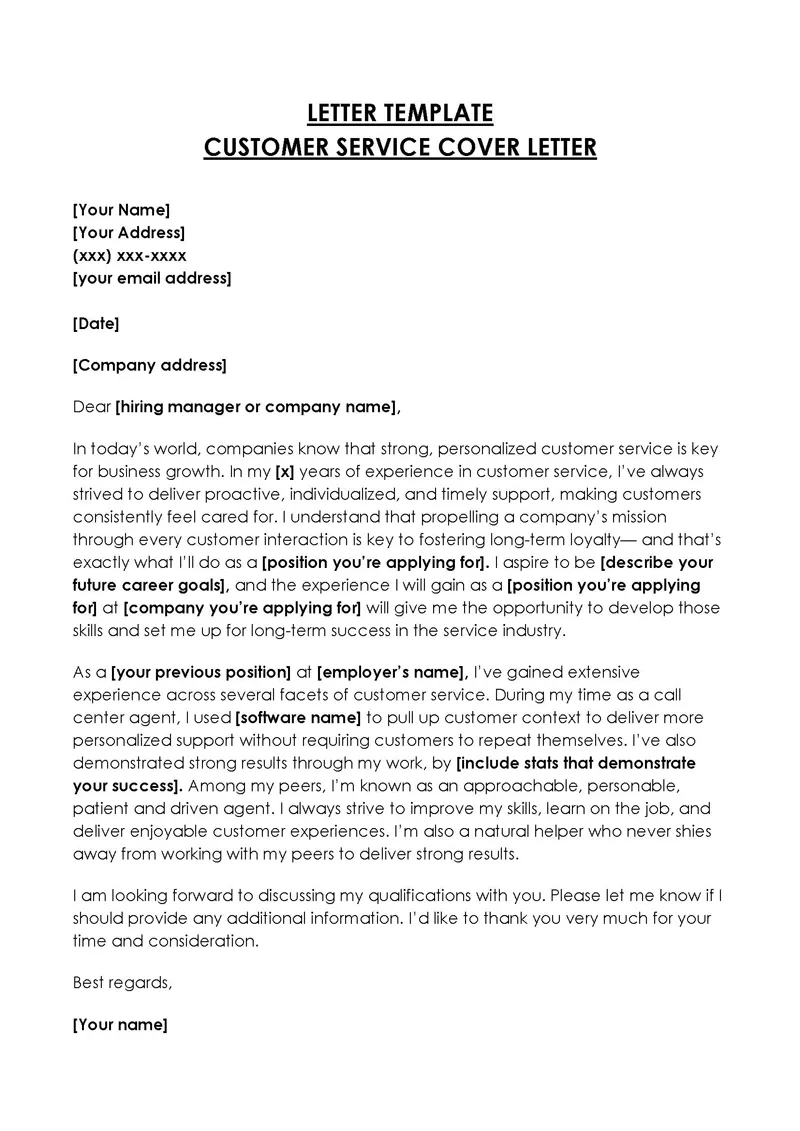
At the top of your cover letter, clearly display your contact information. Include your full name, phone number, email address, and optionally, your LinkedIn profile URL. Ensure your email address is professional and easy to read. This information allows the hiring manager to quickly and easily reach you if they are interested in moving forward with your application. Accuracy is critical here – double-check all details to avoid any missed opportunities due to incorrect contact information. Providing this information at the start saves the recruiter time and shows your professionalism and attention to detail.
Date and Hiring Manager’s Information
Below your contact information, include the current date, followed by the hiring manager’s name and title, the company name, and the company’s address. If you cannot find the hiring manager’s name, use “Hiring Manager” or “Recruiting Team.” This demonstrates that you have taken the time to research the company and personalize your application. Addressing the letter to a specific person shows initiative and respect, increasing the likelihood that your application will be noticed. Always check the company website or job posting for this information to ensure accuracy and make a favorable impression.
Greeting or Salutation
Use a professional greeting to start your cover letter. If you know the hiring manager’s name, use “Dear Mr./Ms./Mx. [Last Name].” If you don’t know the name, use a general greeting like “Dear Hiring Manager,” “Dear [Company Name] Recruiting Team,” or “To Whom It May Concern.” Avoid overly casual greetings like “Hi” or “Hello.” The greeting sets the tone for your letter, and a professional salutation shows respect and attention to detail. It’s a simple step that can make a big difference in how your application is perceived.
The Opening Paragraph Make a Great First Impression
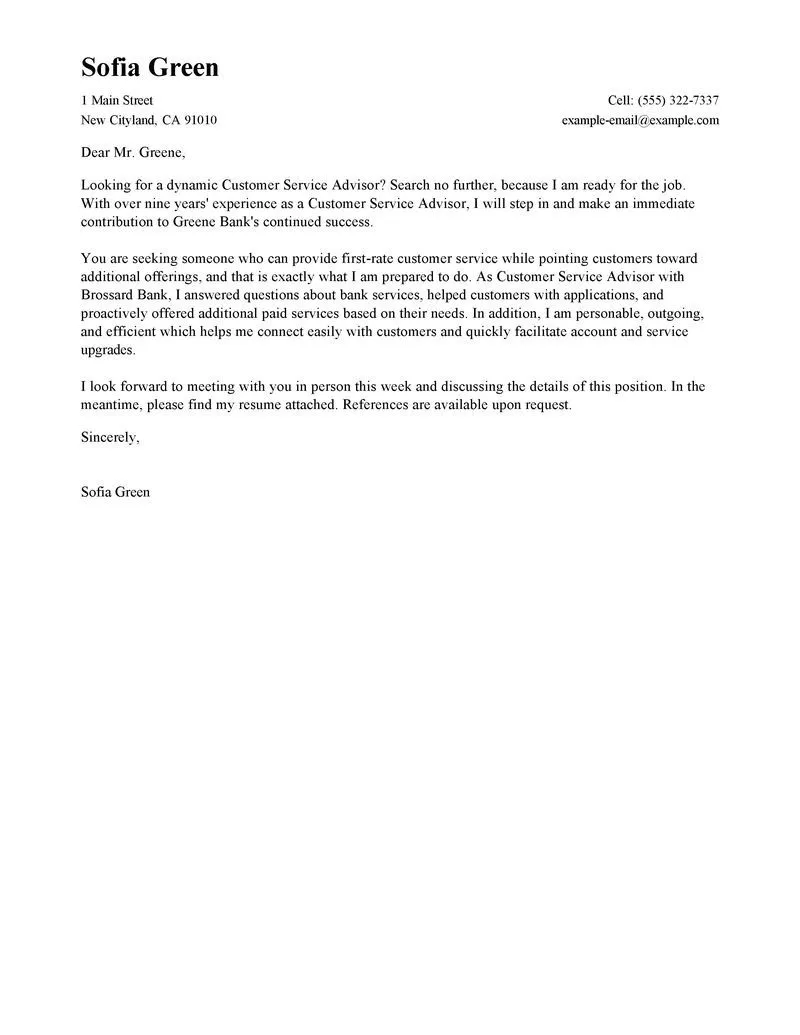
The opening paragraph is your chance to capture the reader’s attention and make a strong first impression. Start by stating the position you are applying for and where you found the job posting. Briefly mention why you are interested in the role and the company. Highlight your key skills and experiences that align with the job requirements. Show enthusiasm and convey your understanding of the company’s mission. This paragraph should be concise, engaging, and set the stage for the rest of your letter. A well-crafted opening paragraph can encourage the reader to continue and learn more about your qualifications.
Highlight Your Relevant Skills and Experience
The body of your cover letter should focus on highlighting your relevant skills and experiences that match the job description. Review the job posting carefully and identify the key skills and qualifications the employer is seeking. Provide specific examples of how you have demonstrated these skills in previous roles. Use the STAR method (Situation, Task, Action, Result) to structure your examples, providing context, explaining your responsibilities, describing your actions, and detailing the positive outcomes you achieved. This approach helps showcase your abilities in a clear and compelling manner. By connecting your past experiences to the job requirements, you make a convincing case for why you are a strong candidate.
Communication Skills
Excellent communication skills are vital for success in customer service. In your cover letter, highlight your ability to communicate clearly and effectively, both verbally and in writing. Provide examples of how you have successfully communicated with customers, colleagues, and supervisors. Mention your experience with active listening, empathy, and the ability to explain complex information in a simple way. Detail your experience with different communication channels like phone, email, and chat. Emphasize your ability to adapt your communication style to different audiences and situations, ensuring that you provide a positive and helpful customer experience.
Problem-Solving Abilities
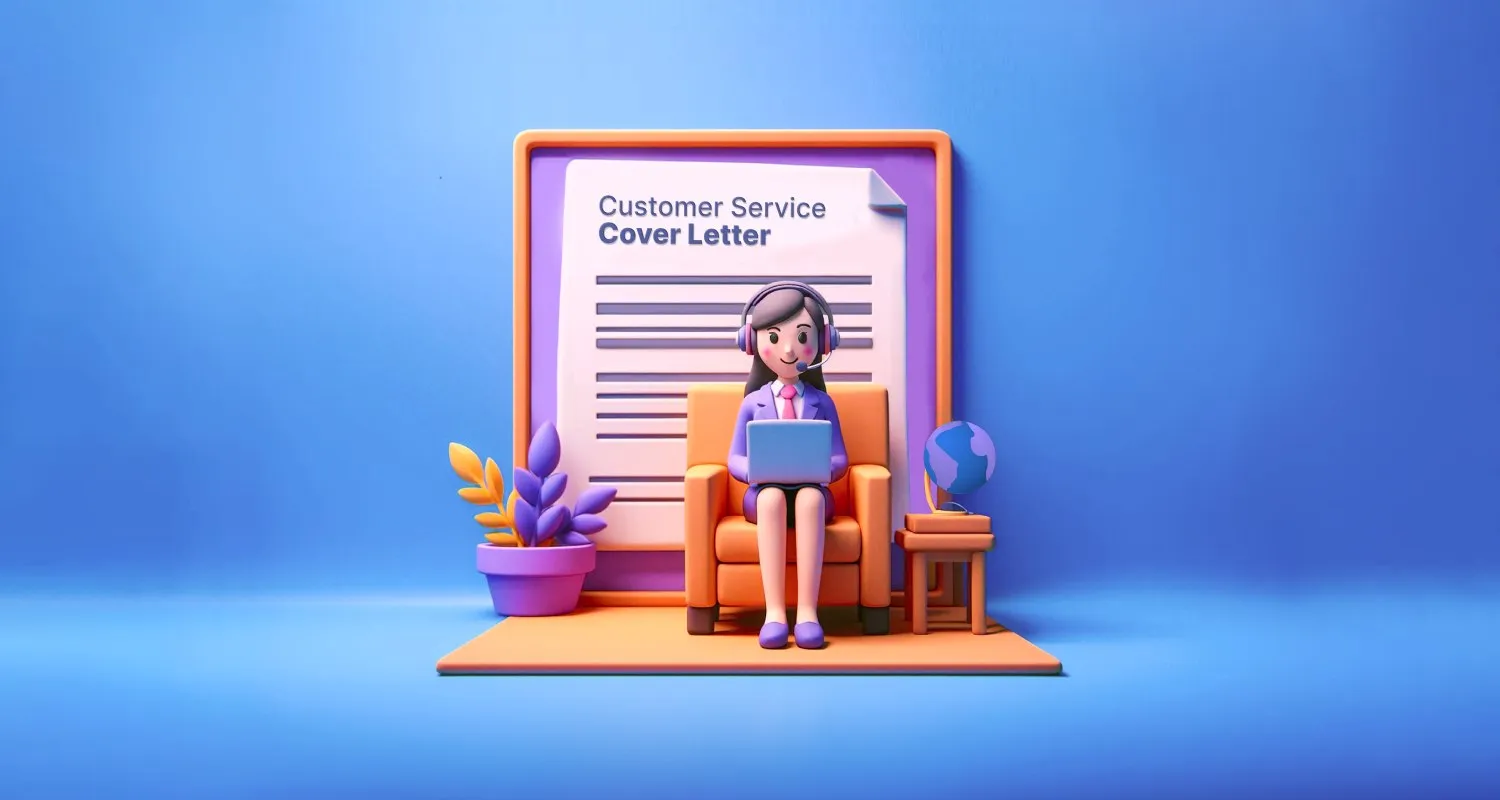
Customer service often involves resolving customer issues and complaints. In your cover letter, showcase your problem-solving abilities. Describe situations where you successfully identified and resolved customer problems. Explain the steps you took to analyze the issue, find a solution, and implement it effectively. Emphasize your ability to think critically, make decisions, and remain calm under pressure. Provide examples of how you turned difficult situations into positive outcomes. Highlight your experience using troubleshooting techniques and your commitment to finding solutions that meet customer needs. Showcasing your problem-solving skills will demonstrate your value to potential employers.
Empathy and Patience
Empathy and patience are essential qualities for customer service professionals. In your cover letter, demonstrate your ability to understand and share the feelings of others, especially during difficult situations. Provide examples of how you’ve shown empathy to customers, actively listening to their concerns and responding with compassion. Highlight your patience and ability to remain calm under pressure, even when dealing with challenging customers. Show how you build rapport and trust with customers, creating a positive and supportive environment. These qualities are highly valued in customer service, so make sure to highlight your ability to connect with customers on an emotional level.
Technical Proficiency
Customer service roles often require proficiency in various technical tools and systems. In your cover letter, list the software, applications, and platforms you are familiar with. Mention your experience with CRM systems, ticketing software, live chat platforms, and any other relevant technologies. Highlight your ability to quickly learn new systems and adapt to changing technologies. Mention your experience with data entry, data analysis, and other technical tasks that are relevant to the job. Emphasize your ability to troubleshoot technical issues, provide technical support, and assist customers in using these technologies effectively.
Tailor Your Cover Letter to the Job
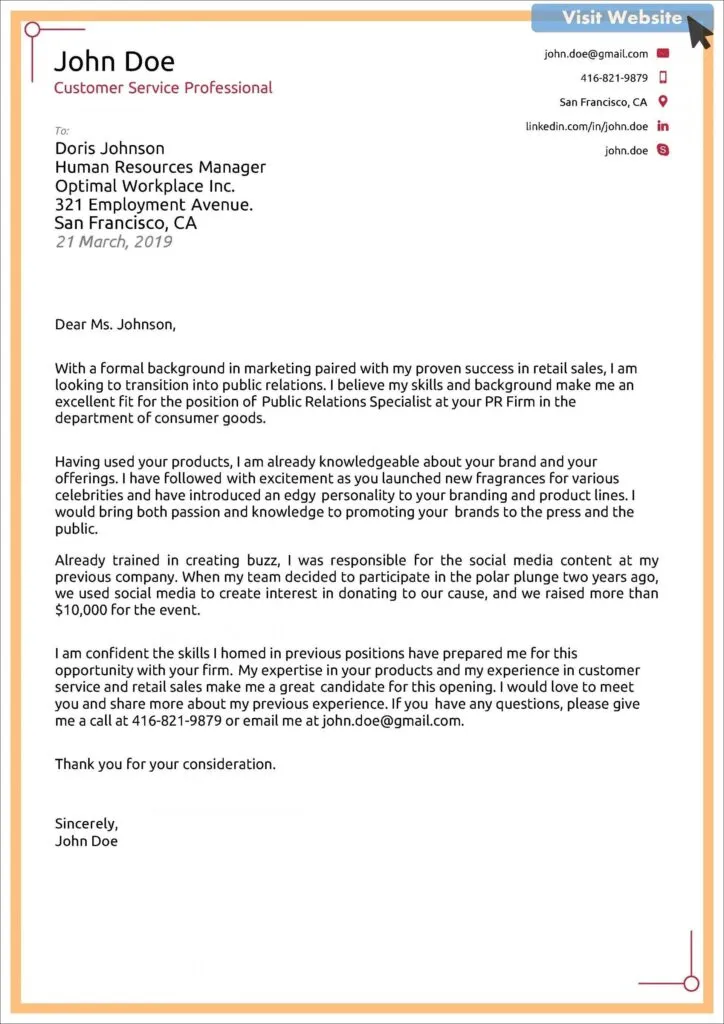
Avoid sending a generic cover letter. Always tailor your cover letter to the specific job you are applying for. Carefully review the job description and identify the key requirements and qualifications the employer is seeking. Highlight the skills and experiences that directly match these requirements. Use keywords from the job description throughout your letter. Show that you understand the company’s mission, values, and culture. Research the company and demonstrate your knowledge of its products or services. By tailoring your cover letter, you show that you have taken the time to understand the role and are genuinely interested in the opportunity. This personalized approach greatly increases your chances of success.
Showcase Your Accomplishments
Instead of just listing your responsibilities, use your cover letter to showcase your accomplishments. Quantify your achievements whenever possible. Use metrics and data to demonstrate the impact you have made in previous roles. For example, mention how you increased customer satisfaction scores, reduced resolution times, or improved sales figures. Describe specific projects you worked on and the results you achieved. Focusing on accomplishments is a powerful way to show potential employers the value you can bring to their organization. It proves that you are not just fulfilling job duties but also contributing to the company’s success. Highlighting your accomplishments helps you stand out from other applicants.
Quantify Your Achievements
Quantifying your achievements is a powerful way to demonstrate your impact. Instead of saying “Improved customer satisfaction,” say “Increased customer satisfaction scores by 15% within six months.” Use numbers and data to provide concrete evidence of your accomplishments. Show the hiring manager the tangible results you have delivered in previous roles. Quantifying your achievements can include numbers like the percentage of customer inquiries resolved, the amount of revenue generated, or the number of customers you assisted. This approach allows potential employers to easily understand the value you bring to a team. It provides a clear picture of your capabilities and the positive outcomes you can achieve.
The Closing Paragraph Call to Action
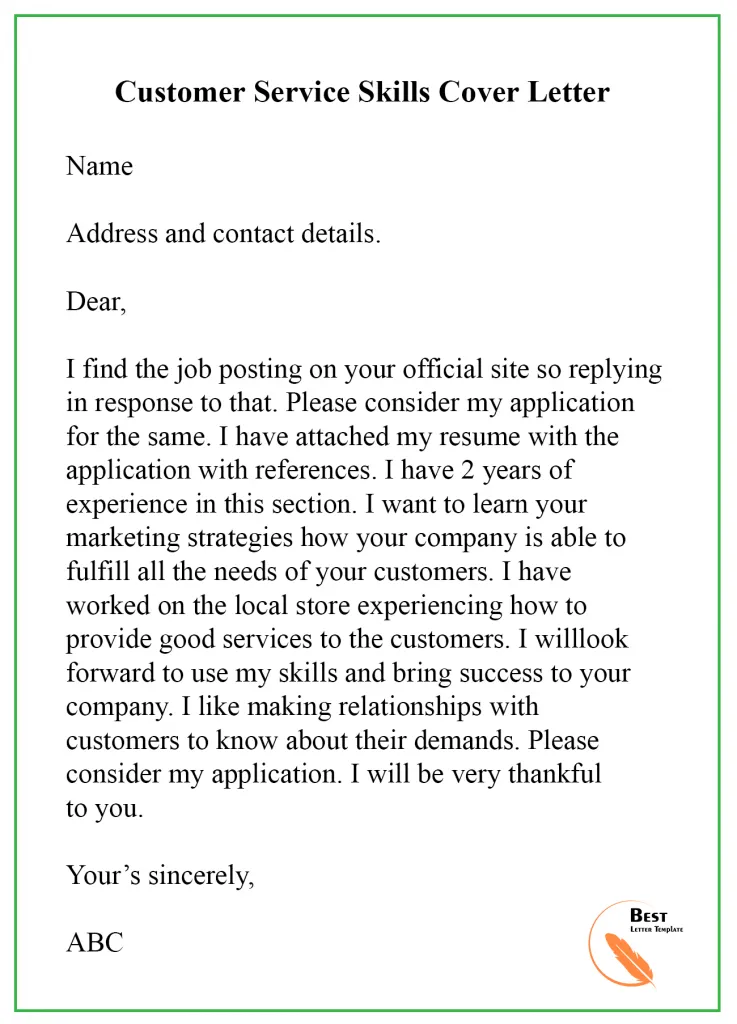
The closing paragraph should restate your interest in the position and thank the hiring manager for their time and consideration. Express your enthusiasm for the opportunity and reiterate why you are the best fit for the role. Include a call to action, such as encouraging the hiring manager to contact you for an interview. You can also mention your availability for an interview. Keep the closing paragraph concise and professional. End with a formal closing like “Sincerely,” “Respectfully,” or “Best regards,” followed by your full name. A strong closing paragraph leaves the reader with a positive impression and encourages them to take the next step in the hiring process.
Proofread and Edit Your Cover Letter
Before submitting your cover letter, carefully proofread and edit it to ensure it is free of errors. Check for any grammatical errors, spelling mistakes, or typos. Read the letter out loud to catch any awkward phrasing or sentence structures. Have a friend or colleague review your cover letter for feedback. A cover letter with errors can create a negative impression, showing a lack of attention to detail. Proofreading is a critical step in ensuring your letter is polished and professional. It shows that you have put effort into presenting your best self, and makes it more likely that you’ll be selected for the next step in the hiring process. Review your cover letter multiple times, and consider using grammar and spell-checking tools to catch any mistakes.
Formatting Tips for Your Cover Letter
Proper formatting can make your cover letter easier to read and more visually appealing. Use a standard font such as Times New Roman, Arial, or Calibri. Use a font size of 11 or 12 points. Maintain consistent spacing throughout the letter. Use single spacing within paragraphs and double spacing between paragraphs. Use clear and concise language, avoiding jargon or overly complex sentences. Keep your cover letter to one page, unless specifically requested otherwise. Use bullet points to highlight key skills and experiences, making your letter easy to scan. Professional formatting makes a positive first impression and demonstrates that you care about presenting a polished and professional application.
